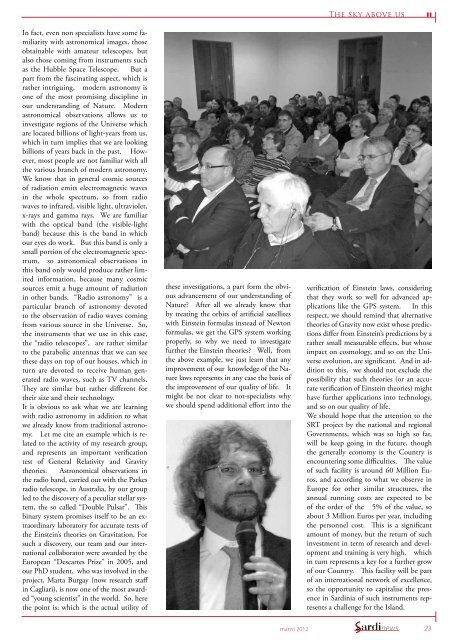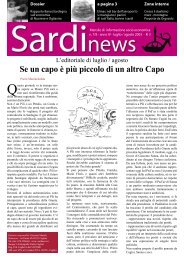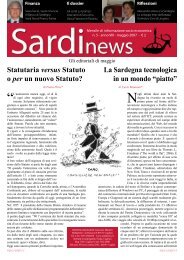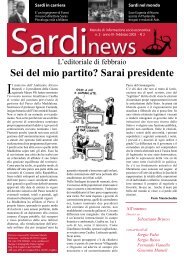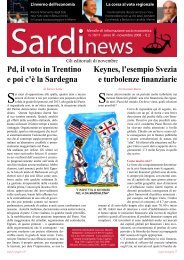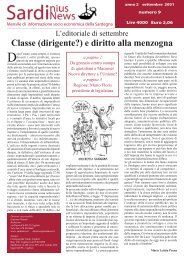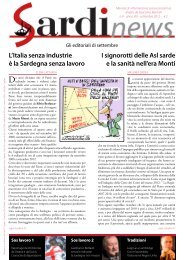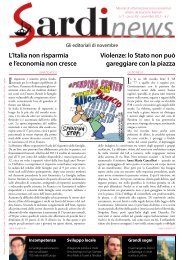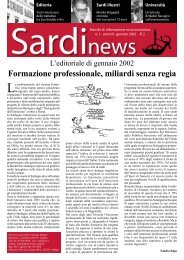You also want an ePaper? Increase the reach of your titles
YUMPU automatically turns print PDFs into web optimized ePapers that Google loves.
In fact, even non specialists have some familiarity<br />
with astronomical images, those<br />
obtainable with amateur telescopes, but<br />
also those coming from instruments such<br />
as the Hubble Space Telescope. But a<br />
part from the fascinating aspect, which is<br />
rather intriguing, modern astronomy is<br />
one of the most promising discipline in<br />
our understanding of Nature. Modern<br />
astronomical observations allows us to<br />
investigate regions of the Universe which<br />
are located billions of light-years from us,<br />
which in turn implies that we are looking<br />
billions of years back in the past. However,<br />
most people are not familiar with all<br />
the various branch of modern astronomy.<br />
We know that in general cosmic sources<br />
of radiation emits electromagnetic waves<br />
in the whole spectrum, so from radio<br />
waves to infrared, visible light, ultraviolet,<br />
x-rays and gamma rays. We are familiar<br />
with the optical band (the visible-light<br />
band) because this is the band in which<br />
our eyes do work. But this band is only a<br />
small portion of the electromagnetic spectrum,<br />
so astronomical observations in<br />
this band only would produce rather limited<br />
information, because many cosmic<br />
sources emit a huge amount of radiation<br />
in other bands. “Radio astronomy” is a<br />
particular branch of astronomy devoted<br />
to the observation of radio waves coming<br />
from various source in the Universe. So,<br />
the instruments that we use in this case,<br />
the “radio telescopes”, are rather similar<br />
to the parabolic antennas that we can see<br />
these days on top of our houses, which in<br />
turn are devoted to receive human generated<br />
radio waves, such as TV channels.<br />
They are similar but rather different for<br />
their size and their technology.<br />
It is obvious to ask what we are learning<br />
with radio astronomy in addition to what<br />
we already know from traditional astronomy.<br />
Let me cite an example which is related<br />
to the activity of my research group,<br />
and represents an important verification<br />
test of General Relativity and Gravity<br />
theories. Astronomical observations in<br />
the radio band, carried out with the Parkes<br />
radio telescope, in Australia, by our group<br />
led to the discovery of a peculiar stellar system,<br />
the so called “Double Pulsar”. This<br />
binary system promises itself to be an extraordinary<br />
laboratory for accurate tests of<br />
the Einstein’s theories on Gravitation. For<br />
such a discovery, our team and our international<br />
collaborator were awarded by the<br />
European “Descartes Prize” in 2005, and<br />
our PhD student, who was involved in the<br />
project, Marta Burgay (now research staff<br />
in Cagliari), is now one of the most awarded<br />
“young scientist” in the world. So, here<br />
the point is: which is the actual utility of<br />
these investigations, a part form the obvious<br />
advancement of our understanding of<br />
Nature? After all we already know that<br />
by treating the orbits of artificial satellites<br />
with Einstein formulas instead of Newton<br />
formulas, we get the GPS system working<br />
properly, so why we need to investigate<br />
further the Einstein theories? Well, from<br />
the above example, we just learn that any<br />
improvement of our knowledge of the Nature<br />
laws represents in any case the basis of<br />
the improvement of our quality of life. It<br />
might be not clear to not-specialists why<br />
we should spend additional effort into the<br />
The sky above us<br />
verification of Einstein laws, considering<br />
that they work so well for advanced applications<br />
like the GPS system. In this<br />
respect, we should remind that alternative<br />
theories of Gravity now exist whose predictions<br />
differ from Einstein’s predictions by a<br />
rather small measurable effects, but whose<br />
impact on cosmology, and so on the Universe<br />
evolution, are significant. And in addition<br />
to this, we should not exclude the<br />
possibility that such theories (or an accurate<br />
verification of Einstein theories) might<br />
have further applications into technology,<br />
and so on our quality of life.<br />
We should hope that the attention to the<br />
SRT project by the national and regional<br />
Governments, which was so high so far,<br />
will be keep going in the future, though<br />
the generally economy is the Country is<br />
encountering some difficulties. The value<br />
of such facility is around 60 Million Euros,<br />
and according to what we observe in<br />
Europe for other similar structures, the<br />
annual running costs are expected to be<br />
of the order of the 5% of the value, so<br />
about 3 Million Euros per year, including<br />
the personnel cost. This is a significant<br />
amount of money, but the return of such<br />
investment in term of research and development<br />
and training is very high, which<br />
in turn represents a key for a further grow<br />
of our Country. This facility will be part<br />
of an international network of excellence,<br />
so the opportunity to capitalise the presence<br />
in Sardinia of such instruments represents<br />
a challenge for the Island.<br />
marzo 2012<br />
23


